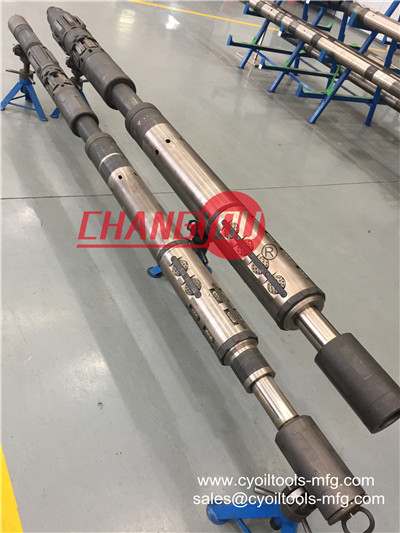A drill stem test (DST) is a procedure for isolating and testing the pressure, permeability and productive capacity of a geological formation during the drilling of a well. The test is an important measurement of pressure behaviour at the drill stem and is a valuable way of obtaining information on the formation fluid and establishing whether a well has found a commercial hydrocarbon reservoir.
Applications of drill stem testing
Cased Hole
Performed after the well is cased, cased hole drill stem testing uses a retrievable production packer that is set above the zone of interest. The well is then flow tested through perforations in the casing. The two types of cased hole testing are pressure operated and mechanically operated.
Tools usually involves in:
Full bore,full opening,anulus pressure control: Select tester valve,lPRN tester valve,champ packer,OMNI valve,absorber,safty joint,jar,gauge carrier,slip joint,dual shots valve,RTTS packer, RTTS saftety joint, Hydraulic circulating valve and so on
Mechanical operated: Mechanical tester valve, RTTS circulating valve, open hole packer, safety seal and so on
Champ packer
Open Hole
Because it's performed before casing is run, open hole drill stem testing can be the most economical way to determine productive capacity, pressure, permeability or the extent of an oil or gas reservoir. The testing equipment is run into the well and the zone of interest is isolated using inflate or compression-set packers, depending on your requirements and drilling conditions.
Alternate Procedures
Depending on testing objectives and scope of work, drill stem testing may also be performed in combination with various other exploration and completion process such as fluid loss control and well control, closed chamber tests, well stimulation, and a combination of DST and TCP.
Procedure
During normal well drilling, drilling mud is pumped through the drill stem and out of the drill bit. In a drill stem test, the drill bit is removed and replaced with the DST tool and devices are inflated above and below the section to be tested. These devices are known as packers and are used to make a seal between the borehole wall and the drill pipe, isolating the region of interest. A valve is opened, reducing the pressure in the drill stem to surface pressure, causing fluid to flow out of the packed-off formation and up to the surface.
(From: wikipedia)
|
